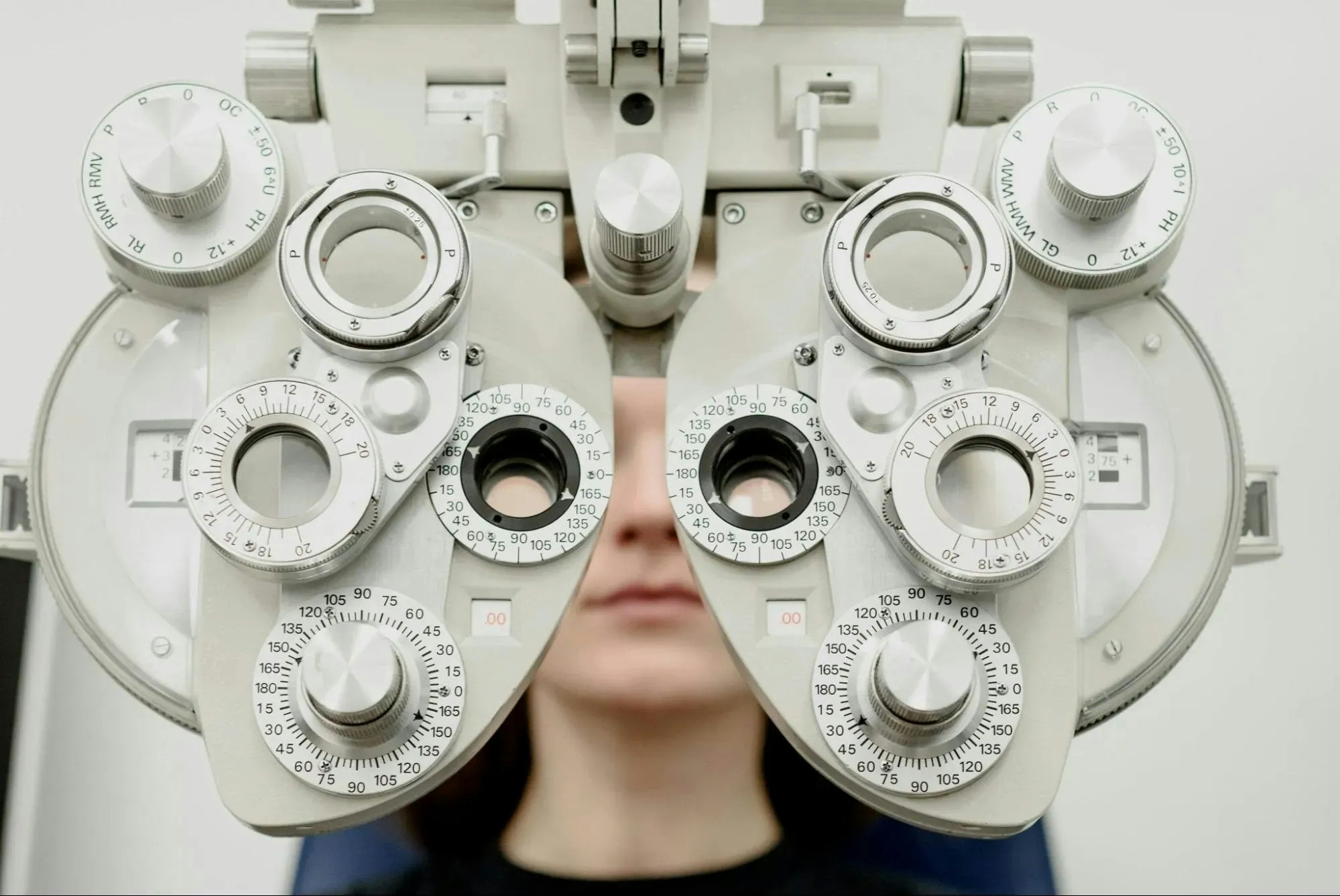What Innovative Optometric Devices Have Improved Patient Care?
Optometry Magazine

What Innovative Optometric Devices Have Improved Patient Care?
In the quest to enhance patient care, optometry professionals are embracing innovative devices that mark a significant leap in treatment and diagnosis. An Optometrist recounts how OCT technology has revolutionized the management of retinal diseases, and alongside this expert perspective, we've gathered additional answers detailing how cutting-edge tools are reshaping the field. From the convenience of portable tonometers to the immersive experience of AR systems in vision therapy, discover how these advancements are making a difference.
- OCT Enhances Retinal Disease Management
- Smartphone Cameras Aid Remote Eye Care
- Portable Tonometers Improve Glaucoma Screening
- Wavefront Aberrometry Customizes Vision Correction
- Digital Phoropters Streamline Prescription Process
- AR Systems Revolutionize Vision Therapy
OCT Enhances Retinal Disease Management
As an optometrist at Tayani Institute, I've witnessed firsthand the transformative impact of optical coherence tomography (OCT) on patient care, particularly for individuals with conditions like macular edema or glaucoma. One patient who stands out came to our clinic with a history of fluctuating vision and was diagnosed with macular edema. Traditional imaging techniques struggled to provide a comprehensive view of the retinal layers, making it challenging to accurately assess the extent of the edema and plan appropriate treatment. However, with the introduction of OCT technology into our practice, we were able to conduct high-resolution, cross-sectional imaging of the retina, allowing for precise measurement of retinal thickness and identification of subtle changes indicative of macular edema. This aided in confirming the diagnosis and enabled us to monitor treatment progress more effectively. Moreover, OCT plays a crucial role in the early detection and management of patients battling glaucoma. By providing detailed structural analysis of the optic nerve head and retinal nerve fiber layer, OCT helped us detect subtle changes indicative of glaucomatous damage long before visual field loss occurred. This allowed for timely intervention and personalized treatment plans tailored to each patient's unique needs, ultimately preserving their vision and quality of life. Overall, the integration of OCT technology into our practice has revolutionized our approach to diagnosing and managing ocular conditions like macular edema and glaucoma, empowering us to deliver more precise, proactive, and personalized care to our patients. Written by: Dr. Stephanie Mulick, OD

Smartphone Cameras Aid Remote Eye Care
Smartphone-adaptable retinal cameras have revolutionized the way optometrists can perform examinations, particularly in remote or underserved areas. These devices attach to a common smartphone and capture high-quality images of the retina, enabling eye care professionals to screen for conditions such as diabetic retinopathy or macular degeneration without the need for bulky, traditional equipment. The convenience of these cameras allows for quicker diagnosis and treatment, improving patient outcomes.
Moreover, the portability of such cameras means that eye care is becoming more accessible to populations that previously struggled to receive it. If you know someone living in a remote location, advise them to check for clinics that offer this mobile service.
Portable Tonometers Improve Glaucoma Screening
Portable tonometers have greatly simplified the process of screening for glaucoma by measuring the intraocular pressure (IOP) of the eye. Eye care professionals now have the ability to conduct these screenings in various settings beyond the confines of their offices, which can increase the frequency and reach of such important preventative care measures. Earlier detection of elevated IOP can lead to better management of glaucoma, a leading cause of blindness.
The ease of using these devices also reduces patient discomfort during examinations. Encourage anyone due for an eye exam to seek out practices that use portable tonometers for a more comfortable experience.
Wavefront Aberrometry Customizes Vision Correction
Wavefront aberrometers are sophisticated devices that have taken precision in vision correction to new heights. By mapping the way light travels through the eye, these machines can identify subtle irregularities in the cornea and lens that standard examinations may miss. This level of detail allows optometrists to create customized treatment plans for refractive errors, providing patients with potentially sharper vision than what standard prescriptions could offer.
It’s a notable leap forward in personalized eye care, with the potential to vastly improve quality of life for those with vision impairments. If you're exploring options for vision correction, inquire about wavefront aberrometry at your local eye care provider.
Digital Phoropters Streamline Prescription Process
Digital phoropters are a modern advancement that has expedited the process of finding the right prescription for glasses or contact lenses. Unlike manual phoropters, which require time-consuming adjustments, digital phoropters use computer-controlled lenses to switch between settings rapidly, allowing patients to compare options more efficiently. This technology not only saves time during eye exams but also improves the overall patient experience by reducing fatigue and frustration associated with traditional methods.
Additionally, the digital recording of prescription data ensures accuracy and ease in record-keeping. Those seeking a thorough and quick eye examination should ask their optometrists about using a digital phoropter.
AR Systems Revolutionize Vision Therapy
Augmented reality (AR) systems are cutting-edge tools that are transforming vision therapy by making exercises more engaging and enjoyable. They use interactive games and activities to help patients work on various vision issues, such as binocular vision problems and amblyopia, commonly known as a lazy eye. By immersing patients in virtual scenarios that require specific visual skills, these systems encourage active participation and can increase the effectiveness of therapy sessions.
The use of AR technology also allows therapists to track progress in real-time and adjust the therapy as needed. Those wishing to enrich their vision therapy experience should inquire about AR options with their therapist.